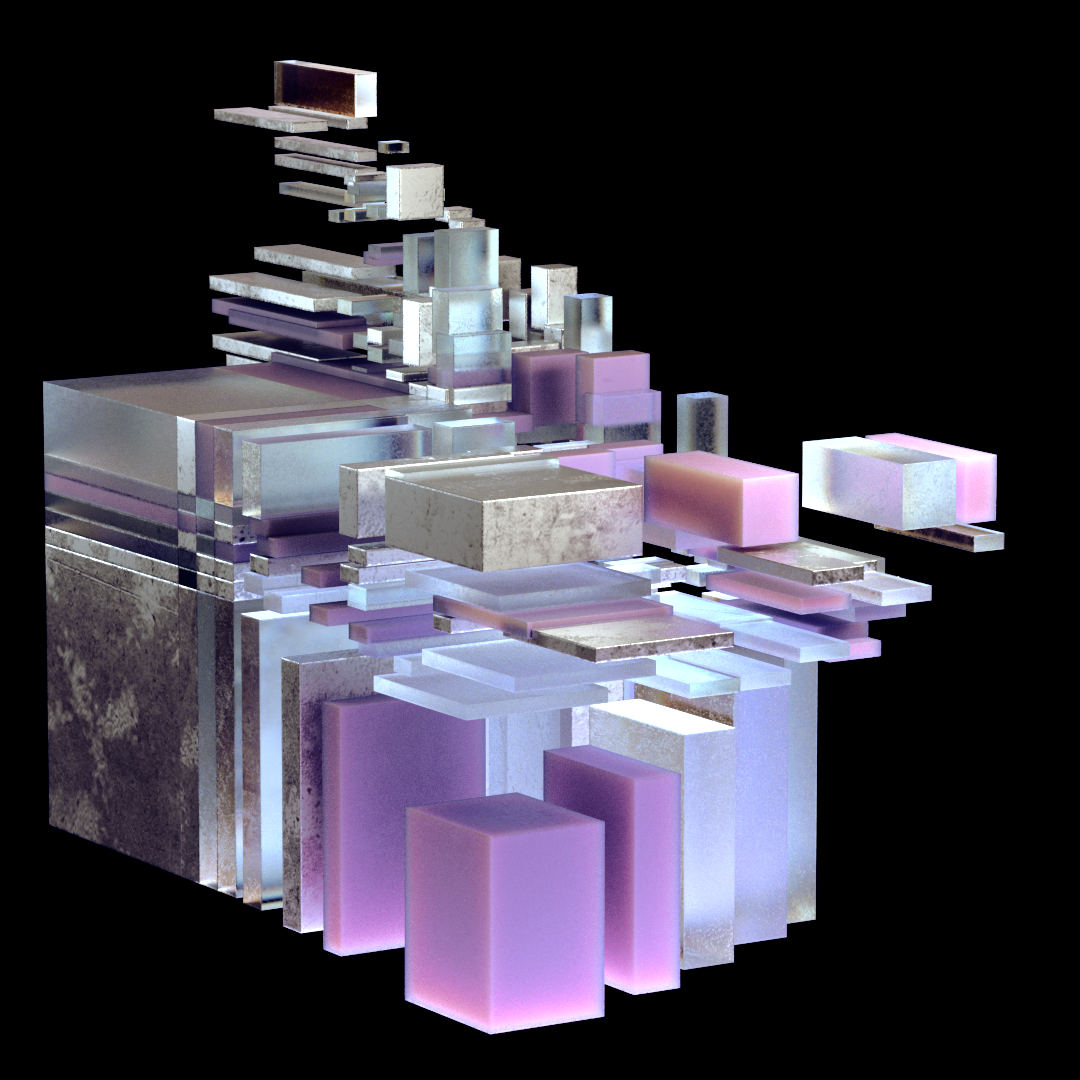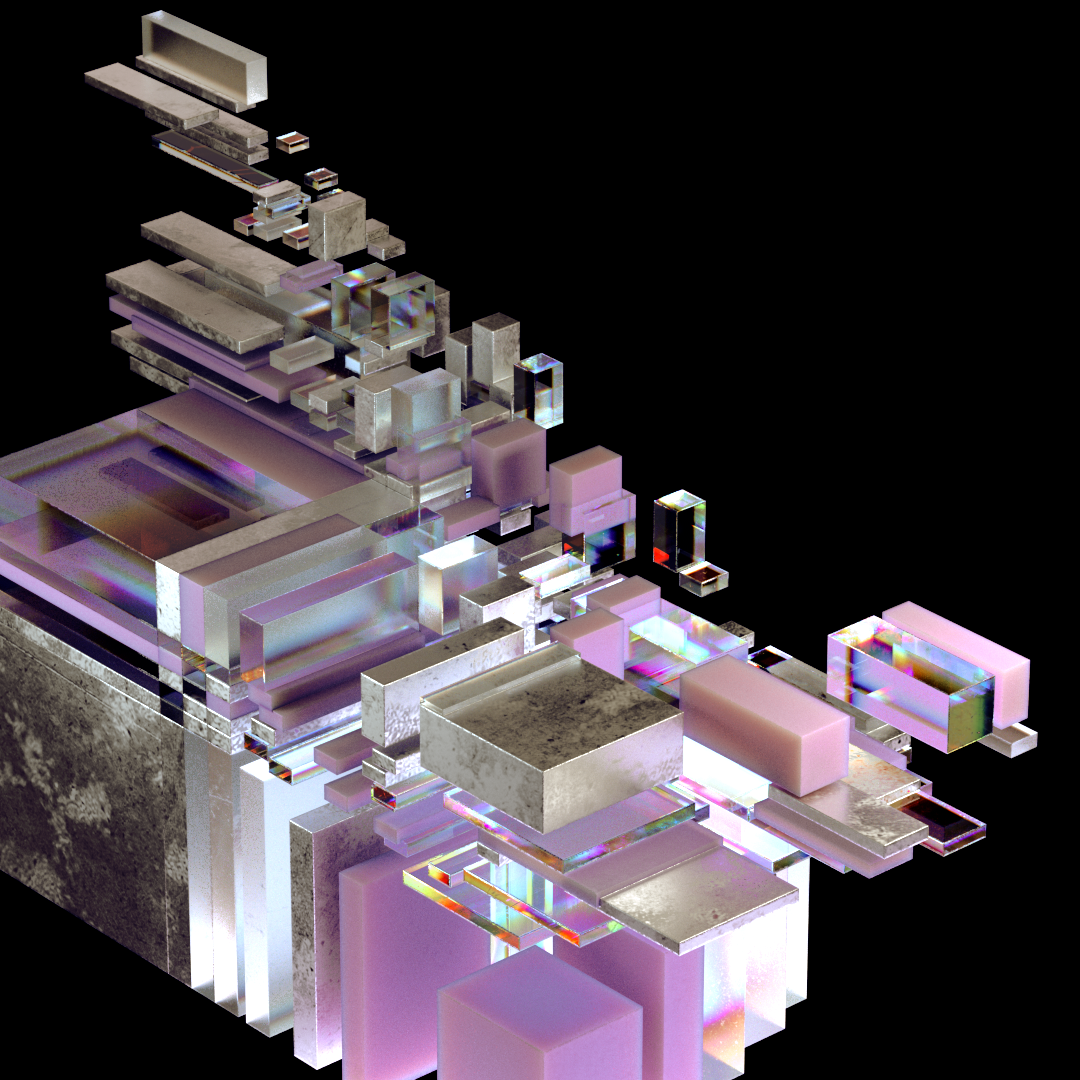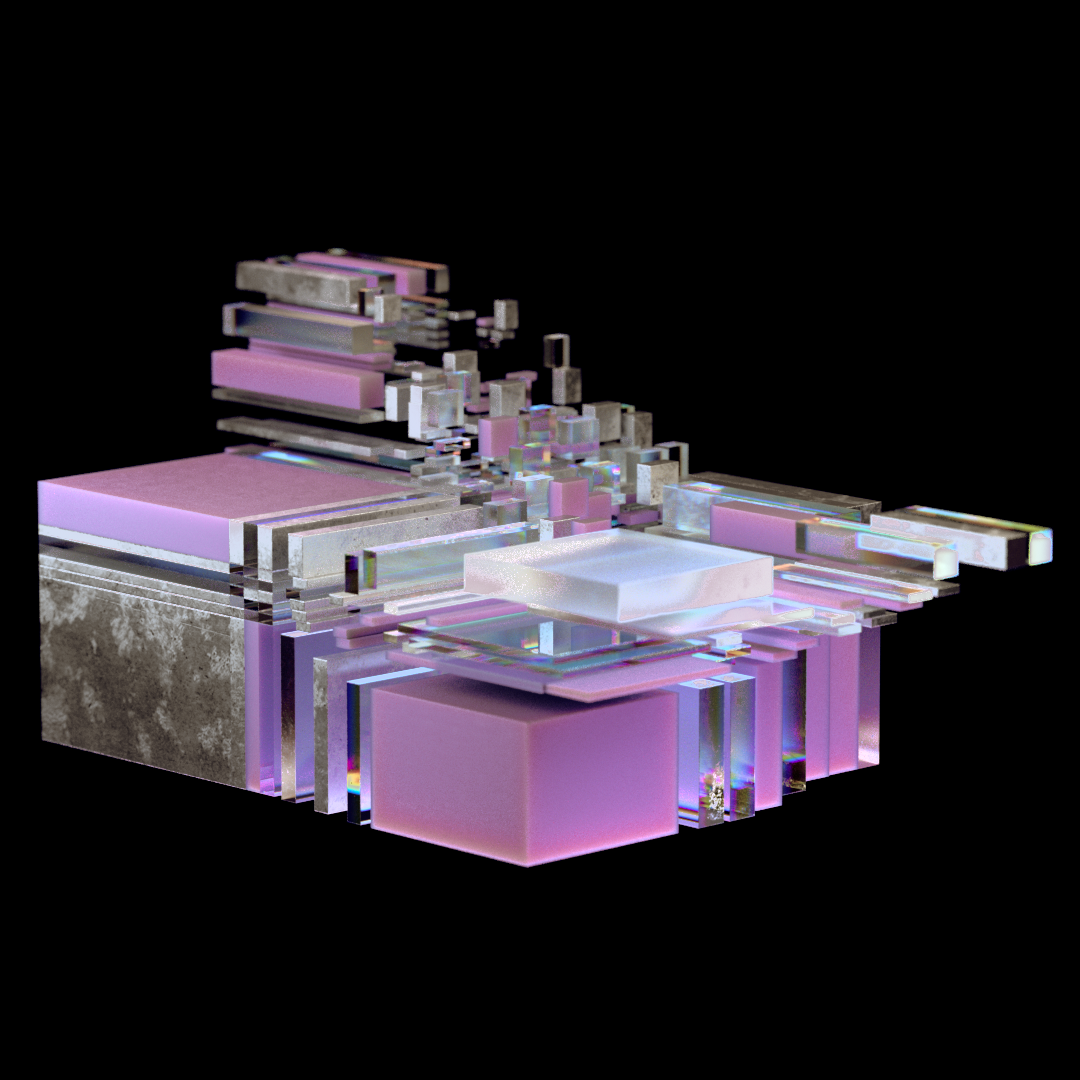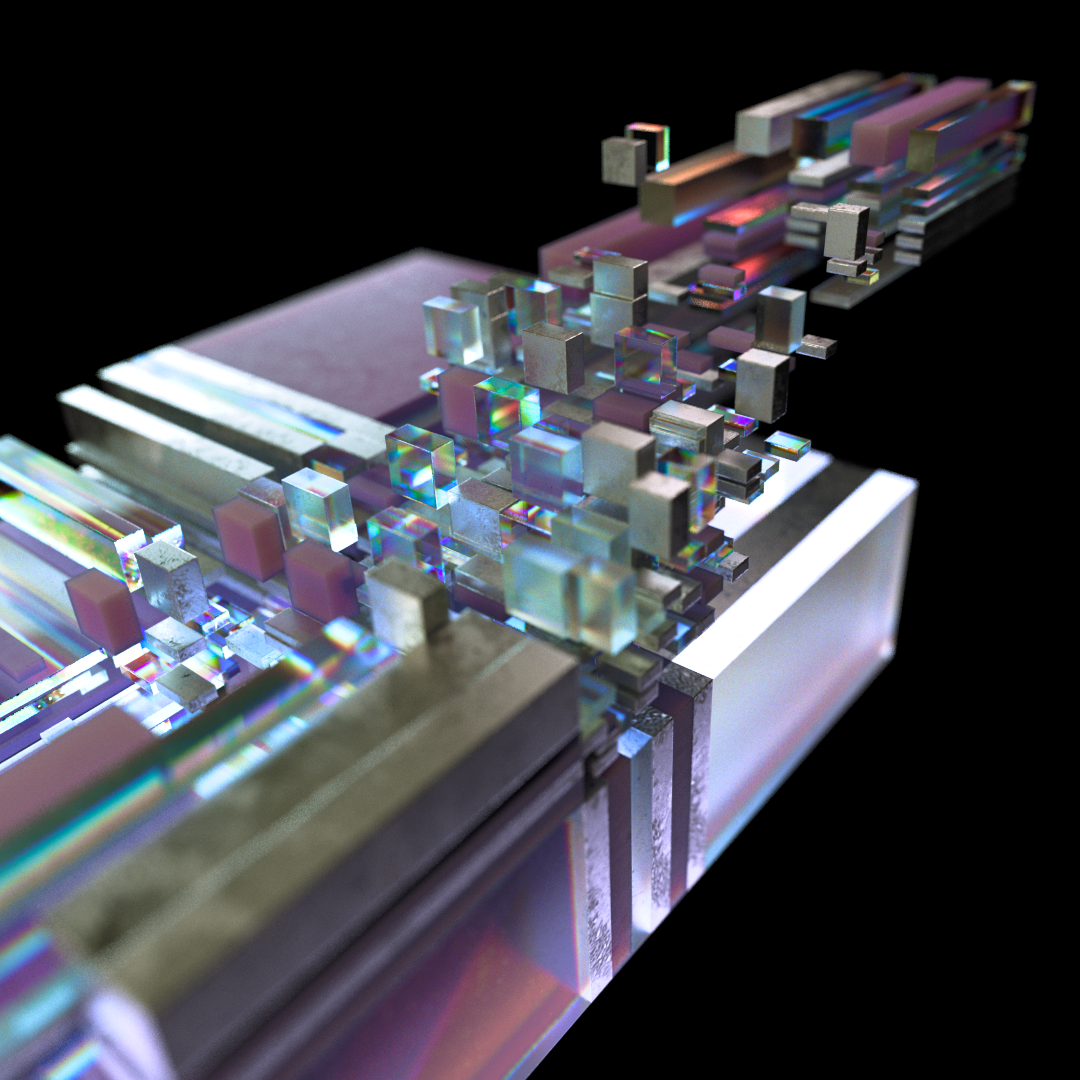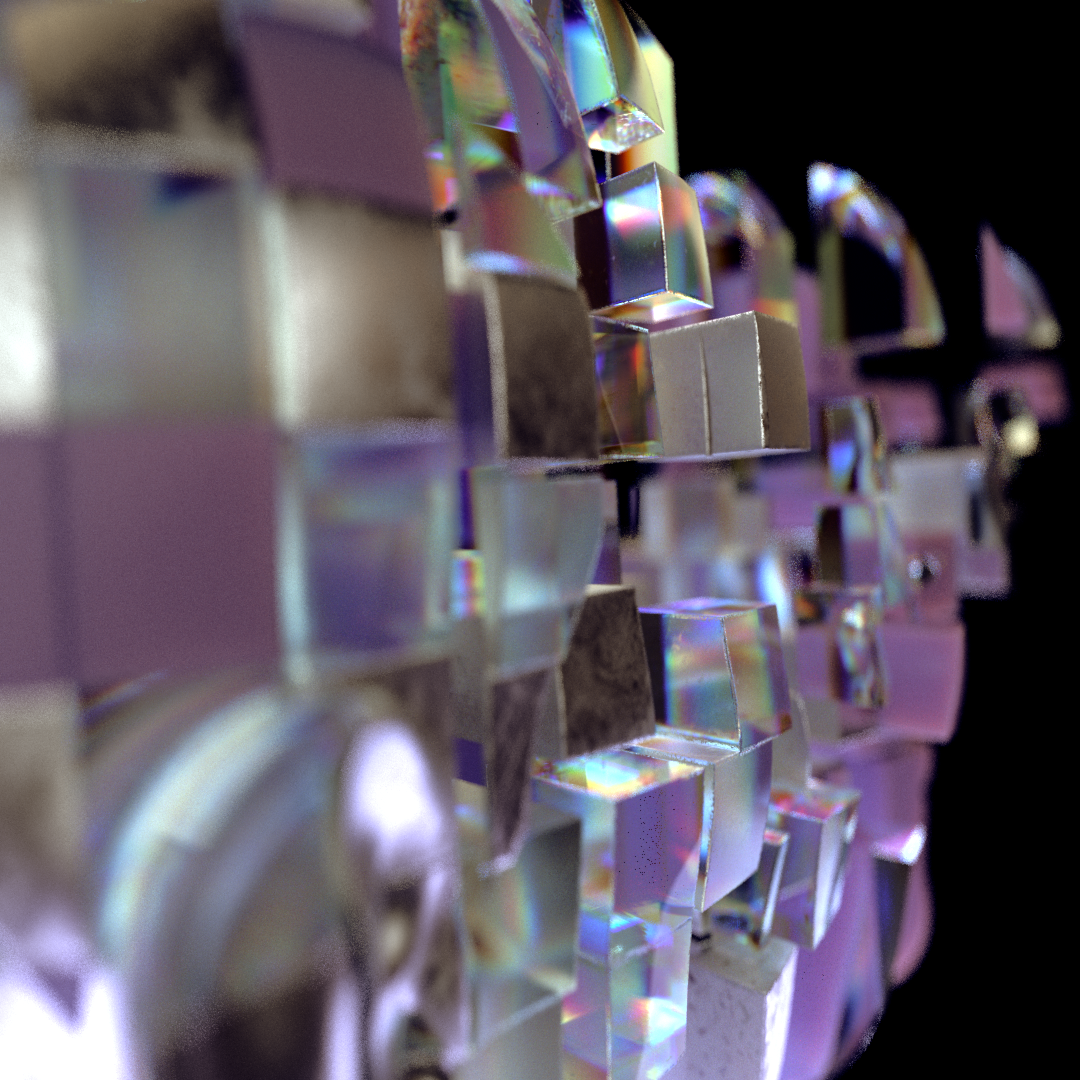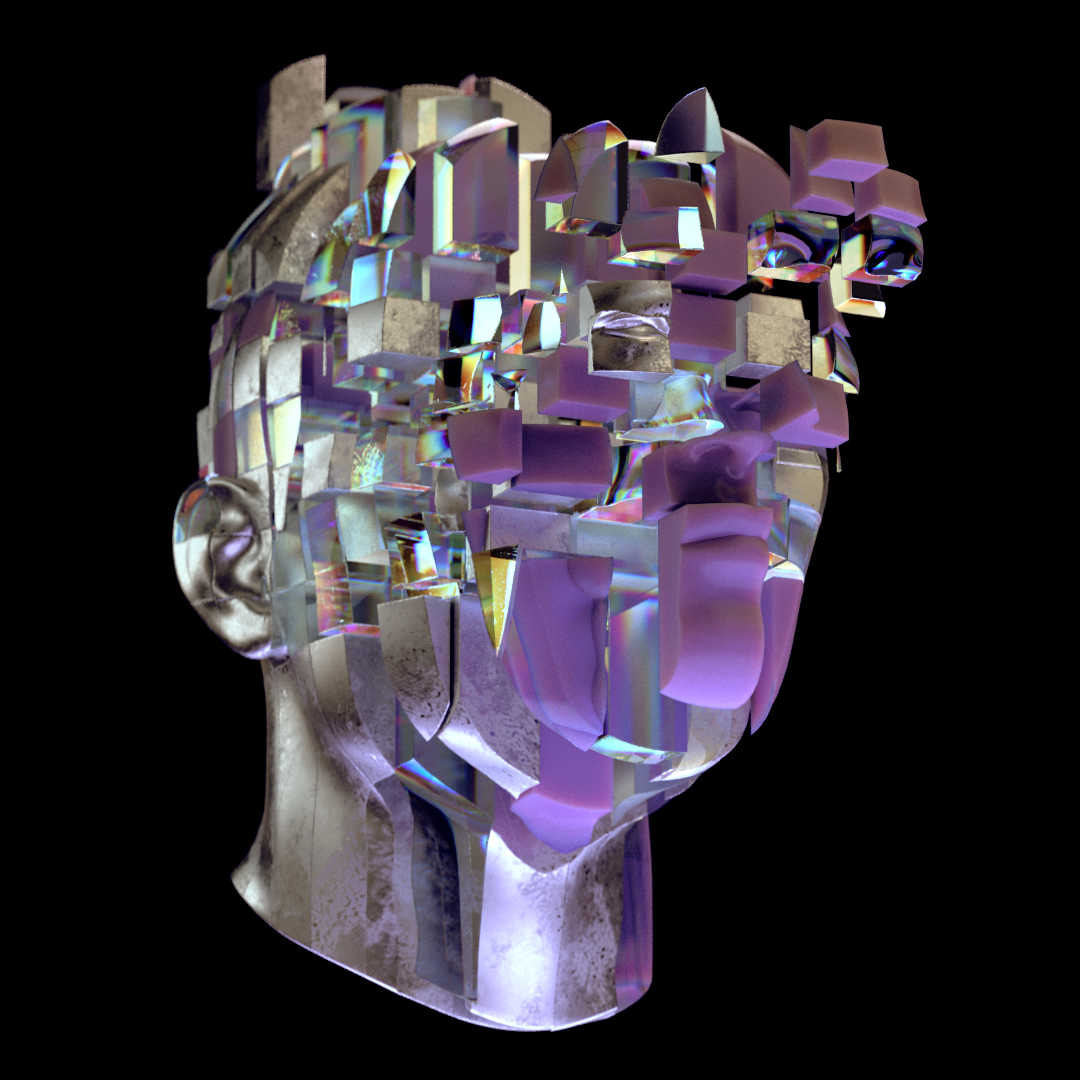Headspace
exploration in procedural material assignment
Exploring procedural material shader techniques using Redshift in Cinema4D.
This one in particular is using an approach presented by Joey Camacho (@rawandrendered) for the 2020 NAB Maxon presentations.
The geometry is broken up using voronoi fractures driven by a grid array, along with some creative use the fields system introduced in C4D over the last couple of years.
The material textures are generated within a single shader built in Redshift. A shader effector working in tandem with a set of mograph / field effectors generates greyscale data that feeds into a range selector in the shader’s node network — assigning the different material textures to the fractured geo. In this case, , three different materials are being used… a grunged up aluminum, a dense foam like material w/ subsurface scattering, and a glass material with some amped-up chromatic dispersion.
The shader system itself is completely procedural. It was initially built with the cubic shape, show below. Once the look of the materials was dialed in it was simply a matter of switching out the geometry. The effectors driving the fracturing of the geometry and the material assignment is adjusted to make a more pleasing image with the new geo.

